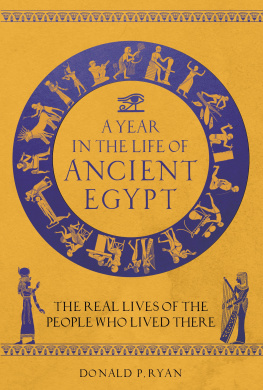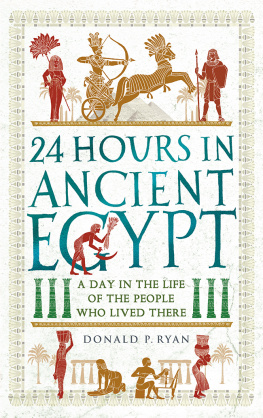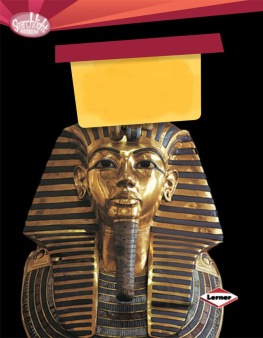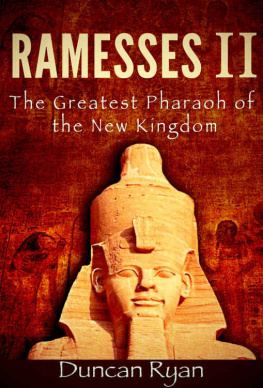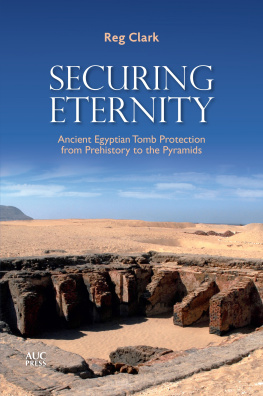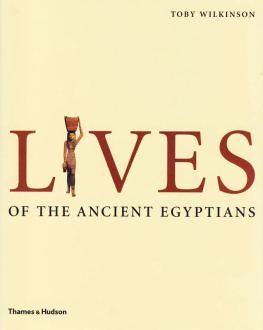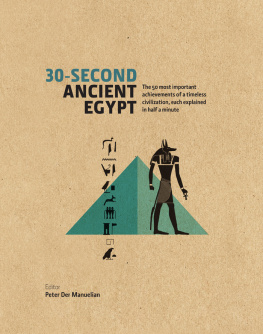A YEAR
IN THE LIFE OF
ANCIENT
EGYPT
Also by Donald P. Ryan
24 Hours in Ancient Egypt

First published in Great Britain in 2022 by
Michael OMara Books Limited
9 Lion Yard
Tremadoc Road
London SW4 7NQ
Copyright Donald P. Ryan 2022
All rights reserved. You may not copy, store, distribute, transmit, reproduce or otherwise make available this publication (or any part of it) in any form, or by any means (electronic, digital, optical, mechanical, photocopying, recording or otherwise), without the prior written permission of the publisher. Any person who does any unauthorized act in relation to this publication may be liable to criminal prosecution and civil claims for damages.
A CIP catalogue record for this book is available from the British Library.
ISBN: 978-1-78929-365-4 in hardback print format
ISBN: 978-1-78929-366-1 in ebook format
www.mombooks.com
In memory of
Dorothy Aubinoe Shelton, Patricia Chant Armstrong Ryan,
Shirley Amdam McKean and Kim Nesselquist
Contents


THE EGYPTIAN EMPIRE 15TH CENTURY BC
Egyptian Chronology
Early Dynastic Period c. 30002686 BC
Old Kingdom 26862125 BC
First Intermediate Period 21602055 BC
Middle Kingdom 20551650 BC
Second Intermediate Period 16501550 BC
New Kingdom 15501069 BC
Third Intermediate Period 1069664 BC
Late Period 664332 BC
Graeco-Roman Period 332 BC AD 395

W hen it comes to ancient cultures, Egypt seems to maintain an irrepressible allure. In our modern era, we continue to be amazed, puzzled and delighted by that civilization, which flourished for around three thousand years but left us only with sundry and often curious traces to reconstruct its former glory. This book presents a glimpse of that land over the course of twelve months during which we can view the lives of several of its inhabitants, from the ordinary to the royal. The point in time is the twenty-sixth year of the reign of the pharaoh Amenhotep II (c. 1400 BC).
In our story well meet not only Amenhotep II and his family, but several of his numerous underlings who comprised the vast Egyptian bureaucracy of administrators, soldiers and priests. While rulers, officials and other elites have left us with some tangible evidence of their deeds, it should never be forgotten that the great achievements of the ancient Egyptians were based on a foundation of ordinary people, including farmers, fishermen, potters, artisans, brick-makers and brewers, who lived in a beautiful land they believed to be overseen by supernatural forces.
The ancient Egyptian civilization seems to have been established by about 3050 BC, if one defines civilization as a culture with characteristics of what anthropologists refer to as a complex society. These traits often include a ruler supported by a hierarchy of officials, differences in wealth amongst the population, craft specialists, the building of monuments (typically palaces and temples) and a system of writing. The ancient Egyptians themselves claimed that their civilization began with the political unification of the two parts of their great land: Upper Egypt, comprising the Nile Valley in the south, and Lower Egypt, encompassing the Nile Delta in the north.
Based on ancient sources, Egyptian history has traditionally been divided into thirty dynasties, ideally groups of related rulers, arranged into named periods and three kingdoms, which allow us to place specific individuals and events in time. The eras known as kingdoms were times when Egypt was unified, prosperous and at its most sophisticated, when many of the great monuments familiar to most of us were built. The intermediate and other periods were times of instability and/or episodes of foreign rule.
The Old Kingdom (c. 26862125 BC) is best known as the era when the great stone pyramids were constructed. The Middle Kingdom (c. 20551650 BC) is considered a classical age when literature and the arts flourished, and the New Kingdom (c. 15501069 BC) is the age of empire during which Egypt expanded its control well beyond its borders in areas to the south and east. The period in which this book is set is during the first of the three dynasties of the New Kingdom the 18th overall and it was a remarkable time indeed. Here we find some incredible rulers including warrior pharaohs, a female pharaoh, a royal religious heretic, and the so-called boy-king Tutankhamun, during a time of great wealth. In the three thousand years of Egyptian civilization, the 18th dynasty began around the middle of that span, c. 1550 BC, about a thousand years after the famed Great Pyramid at Giza was constructed, and over a thousand years before the reign of the oft-romanticized Greek ruler Cleopatra.
The ancient Egyptians organized their lives on the basis of a calendar that wasnt too much different from that which most people use today. They had an annual civil calendar consisting of twelve months of thirty days each, with each day divided into twenty-four hours. There were three seasons of four months, plus an additional five days to approximately match the 365 day natural cycle. The three seasons were that of the flooding of the Nile (approximately mid-July to about mid-November), the season of sowing and growing (mid-November to mid-March) and the time of harvest (mid-March to mid-July). Similar to modern times, the months equivalent to our autumn and winter were quite pleasant during the day and perhaps a bit chilly during the evening. The heat would begin to pick up in the spring with the summer months quite hot.
Certain annual events, such as festivals, were assigned to specific days or cycles of the moon during a particular season and month. In terms of identifying specific events, dates could be indicated based on the reign of an individual pharaoh, for example: Year 15, Month 3 of the Season of Sowing and Growing, Day 5 under the majesty of Thutmose III.
Several of the individuals in this book are historically attested characters including Amenhotep II, of course, and his family, including his successor Thutmose IV, along with several of his officials who are fairly well known from surviving monuments. The fact remains, however, that we know few details of the lives of the majority of ordinary individuals upon which the ancient Egyptian civilization was sustained. While pharaohs boasted of their achievements on temple walls and through impressive stone statuary, and wealthy officials made themselves known with their own statues and painted tombs, the average farmers and craftsmen were illiterate and went about their lives unsung, but still utterly vital in society.
Much of what we know about that culture comes from the remains of temples and tombs, monuments of religion and death built to endure for eternity but representing just a slice of life, and much of it coming from the south of Egypt, where environmental conditions are more favourable to the survival of archaeological remains through the ages. Living in mud-brick houses on the banks of the annually flooding Nile isnt particularly conducive to the long-term survival of the homes and villages where most Egyptians lived. Fortunately, a few unique communities have survived to inform us of some of the details, one being the village that housed the workmen who built the royal tombs during the New Kingdom, and a couple of others that facilitated those who built the pyramids during earlier ages, all situated sufficiently safe from the inundations. In short, our knowledge of ancient Egyptian life is somewhat uneven and unrepresentative of all of society.

